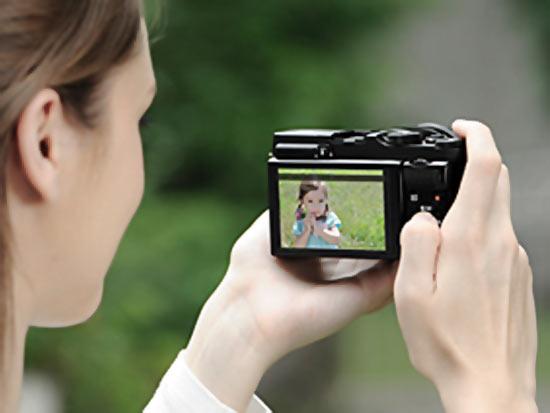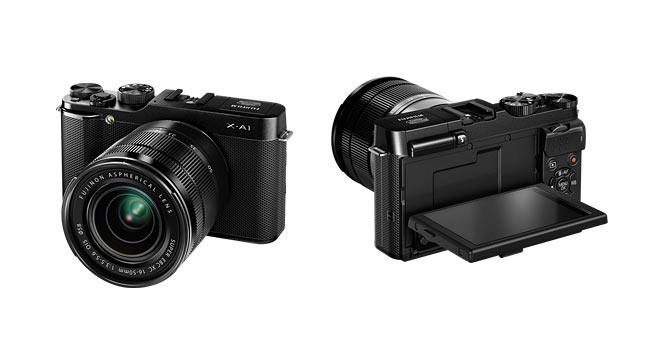 | « Back to article | Print this article |
Fujifilm X-A1: Should you buy this DSLR for Rs 45k?
Hardcore users who want some more bang for their buck, even if it means putting in a bit more cash, should look elsewhere.
It’s becoming tougher and tougher to justify most DSLR purchases in these times. When you look at the various point and shoot options available -- not to mention more appealing “mainstream” cameras like the Samsung Galaxy Camera and the increasing power of smartphone cameras like the Nokia Lumia 1020 -- anything short of revolutionary needs to really stand out these days. The Fujifilm X-A1 camera isn’t an instance of the manufacturer trying anything new or extraordinary. If you’ve seen the X-M1, its predecessor, then you’ll notice that there aren’t many new features here.
Looking at the camera up close, it features a new sensor with a Bayer pattern primary colour filter along with a good build and some interesting ISO options. Nonetheless, when it comes to the overall package, does it provide an appealing option? We take a closer look.
Fujifilm X-A1: Should you buy this DSLR for Rs 45k?
Design
The Fujifilm X-A1 is your standard DSLR frame, with setting dials on top for scene modes, Wi-Fi, shutter speed and even a dial for selecting the exposure mode. An Fn button is also present on top for mapping one of 16 features. The metallic frame contrasts with a slightly rubberised thumb rest and along with the memory card and battery, the camera weighs 330 grams overall. Overall, it’s portable enough and easy to handle. A pop-up flash is built-in to the device along with a hot-shoe option.
On the back, you’ll notice no viewfinder, with the display serving as your main means for framing shots. You’ll notice a D-pad to the right of it, with buttons for the Menu, auto focus, LiveView and zooming in. If you’ll notice, the 3-inch display can be tilted up and down (but not horizontally) for framing shots from either high up or down below. Like the recent Sony Cyber-Shot RX10, it’s somewhat limited compared to other DSLR options available.
Overall, build quality is good, though we would have appreciated a touch screen with the display. If you want to set up any options, you’ll need to rely on the D-pad to navigate your way through the menus.
Reader Invite
Are you a gadget/gaming wizard/afficianado? Would you like to write on gadgets, gaming, the Internet, software technologies, OSs and the works for us? Send us a sample of your writing to gadgetsandgaming@rediffmail.com with the subject as 'I'm a tech wizard/afficianado' and we will get in touch with you.
Fujifilm X-A1: Should you buy this DSLR for Rs 45k?
Interface
In terms of features, the Fujifilm X-A1 has a good number of options. Face Detection is available. White balance modes include Auto, Custom, Fluorescent, Shade and much more, with film simulation modes include Sepia, Provia, Vivia and Black and White.
You also have filter options including Soft Focus, Low Key, Toy Camera, Partial Colour and many more. Interestingly, these filters are only limited to JPEG images. Some cameras allow you to shoot an image and save both the original RAW file along with the filtered JPEG. Not the Fujifilm X-A1, unfortunately. At least along with the 49 point auto focus, you also have options for tracking auto focus and continuous auto focus. You also have an option for manual focus, should you wish to configure settings on your own.
There aren’t a lot of other extraneous features. Wi-Fi connectivity is on-board along with PC AutoSave to transfer your images to a smartphone and tablet, thus saving them automatically. It’s no different from other cameras, but it’s a nice touch overall. It doesn’t compare to the connectivity of a Galaxy Camera though. Sure, the latter comes with Android and isn’t a fair comparison but it stands out all the more compared to the X-A1’s somewhat bland feature set.
Reader Invite
Are you a gadget/gaming wizard/afficianado? Would you like to write on gadgets, gaming, the Internet, software technologies, OSs and the works for us? Send us a sample of your writing to gadgetsandgaming@rediffmail.com with the subject as 'I'm a tech wizard/afficianado' and we will get in touch with you.
Fujifilm X-A1: Should you buy this DSLR for Rs 45k?
Specs and image quality
The Fujifilm X-A1 is more or less the same as its predecessor but features an APS-C CMOS sensor with a Bayer pattern primary colour filter with an optical resolution of 16.3 megapixels. The Fujinon XF23 mm, f/1.4R lens has an effective focal length of 35 mm and an EXR Processor II for image processing. It features optical image stabilization, with a 49 point auto focus. ISO ranges from 100-6400 but can be expanded further up to ISO 12800 and ISO 25600 when capturing images in JPEG format. Full HD recording is possible at 30 frames per second, with an option for 1280x720 video at 30 FPS as well. Maximum shutter speed is 30 seconds while minimum shutter speed is 1/4000th of a second. For storage options, you’ll have support for SD, SDHC and SDXC.
The primary colour filter provides an interesting mix of image quality. Though it potentially means for more noise in RAW images, the conversion process means it’s masked in JPEG files. This is evident when shooting at high ISO settings, with colour quality and sharpness remaining quite good even at ISO 3200. Closer observation and magnification don’t provide the same amount of quality obviously. It’s a mixed bag overall, especially compared to other DLSR cameras. Auto focus is quick in most settings with colour quality holding up in natural light, though both suffer somewhat in low light. Shutter speed fits into the same category -- it does tend to lag indoors or in low light.
Reader Invite
Are you a gadget/gaming wizard/afficianado? Would you like to write on gadgets, gaming, the Internet, software technologies, OSs and the works for us? Send us a sample of your writing to gadgetsandgaming@rediffmail.com with the subject as 'I'm a tech wizard/afficianado' and we will get in touch with you.
Fujifilm X-A1: Should you buy this DSLR for Rs 45k?
Verdict
The Fujifilm X-A1 has launched in India and currently retails for Rs 44,990, and comes bundles with the Fujinon XF23mm, f/1.4R. It doesn’t quite compare to the X-M1, unfortunately, and it doesn’t help that it isn’t priced all that cheaper. When you compare the image quality, feature set and build quality of the X-A1, it feels like a decent deal. It just doesn’t do much to stand out compared to the likes of Sony, Nikon and Canon.
If you’re desperate to use the X-M1 and can’t find it anywhere, you can opt for the X-A1 without many issues. More hardcore users who want some more bang for their buck, even if it means putting in a bit more cash, should look elsewhere.
Reader Invite
Are you a gadget/gaming wizard/afficianado? Would you like to write on gadgets, gaming, the Internet, software technologies, OSs and the works for us? Send us a sample of your writing to gadgetsandgaming@rediffmail.com with the subject as 'I'm a tech wizard/afficianado' and we will get in touch with you.





